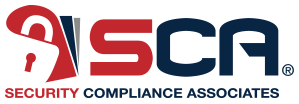
- June 30, 2023
- Brian Fischer
- 967 Views
- 0 Likes
- Blog, Compliance
Insurance Compliance: Where Cybersecurity Fits In
The insurance industry, like many others, is facing increasing cybersecurity threats that could lead to devastating financial and reputational losses. So, how can insurance companies protect themselves?
The National Association of Insurance Commissioners (NAIC) created the Insurance Data Security Model Law, a set of cybersecurity standards designed to protect consumer data and safeguard the industry as a whole. While the NAIC does not have the authority to make the Model Law mandatory, adoption is left to individual states who are feeling the pressure to demonstrate their commitment to protecting their citizens’ sensitive information. This push towards greater cybersecurity measures underscores the importance of protecting data in an increasingly digital world and highlights the critical role that regulatory frameworks can play in ensuring that companies take cybersecurity seriously.
Related Content: NAIC Insurance Data Security Model Law
The NAIC Insurance Data Security Model Law
The NAIC Insurance Data Security Model Law was developed in response to the growing need for enhanced cybersecurity measures within the insurance industry. The Model Law was first introduced in 2017 and is based on the New York Department of Financial Services Cybersecurity Regulation, which was implemented in the same year. The Model Law was created to establish a set of minimum standards and requirements for insurance companies to follow to safeguard sensitive consumer data and protect against cyber threats. The law was designed to be flexible enough to accommodate different types and sizes of insurance companies while also providing a consistent framework for cybersecurity across the industry.
The purpose of the NAIC Insurance Data Security Model Law is to ensure that insurance companies take appropriate measures to protect the confidentiality, integrity, and availability of their client’s data. The law aims to promote cybersecurity best practices, enhance industry-wide preparedness for cyber threats, and establish uniform data security standards that regulators can enforce. The Model Law requires insurance companies to develop and implement a comprehensive written cybersecurity program that outlines policies, procedures, and technical safeguards to protect against data breaches and cyber-attacks.
Additionally, the Model Law requires companies to report any data breaches to regulators within a specific time frame and to provide notice to affected individuals in a timely manner. The Model Law’s overall goal is to provide greater protection for consumers’ personal information, strengthen the insurance industry’s resilience to cyber threats, and promote public trust in the insurance sector.
Understanding Nonpublic Information
Nonpublic information, in the context of the NAIC Insurance Data Security Model Law, refers to any information that is not available to the general public and is considered sensitive or confidential. This can include personally identifiable information (PII), such as names, addresses, social security numbers, financial information, health records, and other sensitive data that could be used for identity theft or fraud. Nonpublic information can also include proprietary information, trade secrets, and other intellectual property that could be valuable to competitors or malicious actors.
The NAIC Insurance Data Security Model Law requires that insurance companies establish policies and procedures to protect nonpublic information from unauthorized access, use, or disclosure. This includes implementing physical, technical, and administrative safeguards to secure electronic and paper-based records containing nonpublic information. Insurance companies are also required to regularly assess and update their cybersecurity programs to ensure that they remain effective and relevant in the face of evolving cyber threats.
The Importance of Your Risk Assessment
The nature and scope of the risk assessment, including the use of Third-Party Service Providers, and the sensitivity of any Nonpublic Information involved will depend on the organization’s overall size and the quantity of data. Organizations will need to develop a written Information Security Program based on their risk assessment that contains explicit administrative, technical, and physical safeguards to protect their data.
The program should be designed to protect the security and confidentiality of Nonpublic Information, to protect against any threats or hazards, and to ensure solely authorized access and use of Nonpublic data. The program should also define and reevaluate a schedule for the retention of Nonpublic Information.
Your risk assessment should identify all of your information assets and reasonably foreseeable internal or external threats those assets may face. Safeguards and the respective policies your organization has in place should include, but are not limited to, employee training and management, information systems, network and software use and design, and the detection and prevention of any identified risks. Finally the risk assessment will allow for the development of a risk management plan that determines which security measures need to be implemented when. This risk assessment is the most important part of the NAIC Insurance Data Security Model Law.
Written Information Security Programs
Following the risk assessment and the development of a security program based on said assessment, a written information security program (WISP) would be the final output. WISPs are essential to the NAIC Insurance Data Security Model Law. They involve written plans that outline an insurance company’s approach to information security and how it will protect nonpublic information from unauthorized access, use, or disclosure. The WISP must be tailored to the specific needs and risks of the company, and it must be reviewed and updated on an ongoing basis to reflect changes in the business environment or technology.
The NAIC Insurance Data Security Model Law requires insurance companies to develop and implement a comprehensive WISP that meets specific requirements outlined in the law. The WISP must include a description of the company’s administrative, technical, and physical safeguards to protect nonpublic information, as well as the identification and assessment of internal and external risks to the security, confidentiality, and integrity of nonpublic information. Working with a team of experienced cybersecurity professionals can help insurance agencies and brokers maintain the necessary documentation to prove compliance with the law.
What Will Happen if You Don’t Comply
Non-compliance with NAIC rules and regulations can result in significant legal, financial, and reputational consequences for insurance companies. The specific penalties for non-compliance vary by state and may depend on the severity and scope of the violation.
State regulators may investigate and take enforcement action against non-compliant companies, including civil penalties, cease-and-desist orders, or even revocation of licensure. Additionally, non-compliant companies may be subject to private litigation from affected individuals or third parties, which can result in costly settlements or judgments.
Non-compliance can also result in massive reputational damage. Data breaches and cyber attacks can erode consumer trust and damage the company’s brand, potentially resulting in lost customers and revenue. In today’s digital age, cybersecurity is a critical aspect of doing business, and insurance companies that fail to prioritize it may face significant consequences. Therefore, it is essential for insurance companies to take NAIC rules and regulations seriously and invest in robust cybersecurity measures to protect sensitive information and prevent costly breaches.
One of the best things your insurance organization can do to ensure NAIC compliance is to undergo an assessment to align your cybersecurity strategy with your state’s insurance regulation requirements. SCA has decades of cybersecurity experience and has been helping insurance organizations comply with the NAIC insurance data security model law since its inception. we’d love to share our expertise with you! Now more than ever, insurance companies need to safeguard their network security against malicious actors.

